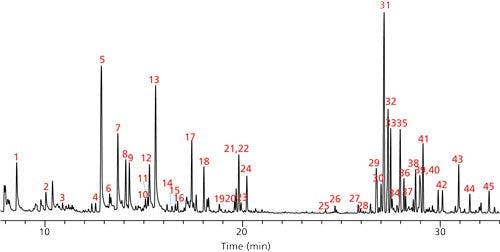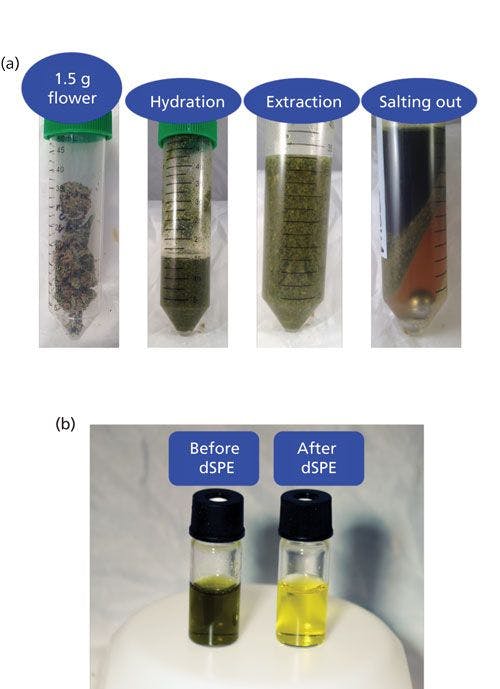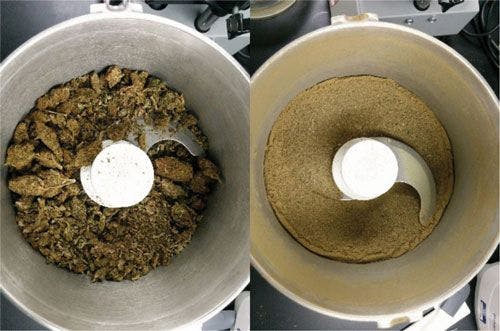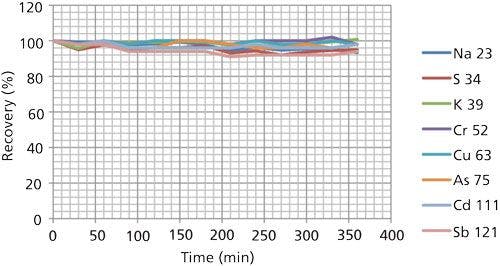Quantitation of Cannabinoids and Pesticides in Cannabis Products Using the Triple Quad 3500 LC–MS/MS System
With the recent legalization of cannabis in several states, there is a growing need for robust, reliable, and cost-effective analytical methods to facilitate routine testing for potency and contaminants. Here we present an LC–MS/MS method that uses the budget-friendly SCIEX Triple Quad 3500 LC–MS/MS system for the simultaneous detection and quantification of cannabinoids, pesticides, and mycotoxins in cannabis products using the Scheduled MRM algorithm.
With the recent legalization of cannabis in several states, there is a growing need for robust, reliable, and cost-effective analytical methods to facilitate routine testing for potency and contaminants. Here we present an LC–MS/MS method that uses the budget-friendly SCIEX Triple Quad™ 3500 LC–MS/MS system for the simultaneous detection and quantification of cannabinoids, pesticides, and mycotoxins in cannabis products using the Scheduled MRM™ algorithm.
Potency testing is performed to measure concentrations of cannabinoids, some of which are psychoactive components, while others are believed to have medicinal properties for ailments such as glaucoma, insomnia, and epilepsy.
Like any agricultural product, cannabis has the potential to be attacked by pests or pathogens resulting in the need for treatment with insecticides, acaricides, fungicides, and potentially other crop protection agents. Tolerance levels for these chemical contaminants have been established through health risk analyses.
Pesticide use in cannabis production is of concern for several reasons. While residues on the marketed product are important metrics for quality, it may be difficult to associate trace residues with human health effects, or these correlations may take years of careful medical research to identify. Perhaps more importantly, the creation of rational guidelines for pesticide use can serve to protect workers in the production system and the environment. As a high value crop, crop yields are economically vital to growers and others in the industry. As such, it becomes paramount to determine any potential risks to employees, customers, and the environment as a result of growing practices. This can be accomplished by appropriate registrations, inspection, and residue analysis. As such, sensitive, selective, accurate, and economical analytical methods are needed to screen cannabis products for pesticide residues and mycotoxins (1).
The list of contaminants grows as more states approve the use of cannabis for medicinal or recreational purposes. All states that have legalized it require testing for labeling; however few states actually specify what pesticides to measure or what the minimum residual level (MRL) should be. Currently, several contract laboratories use HPLC–UV, which can provide potency data, however, these methods do not provide sufficient specificity or sensitivity for more comprehensive analyte lists such as pesticides and mycotoxins, especially at low levels (~10 μg/kg). Using HPLC–MS/MS analysis provides the sensitivity and selectivity for these low levels using MRM analysis.
Sampling and Sample Preparation
Ten cannabis samples were extracted by adding 0.1 to 2 g of cannabis product to 10 mL of methanol then sonicated for 10 min followed by centrifugation at 16,000 rpm for 5 min. Following filtration samples were analyzed without further workup.
Figure 1: Chromatographic separation of isobars.
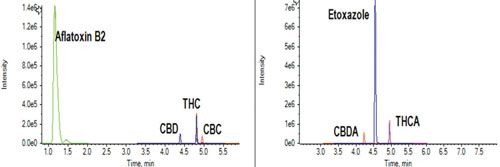
Summary
These results demonstrate the utility and quantitative potential of this method for the routine analysis and quantification using the SCIEX Triple Quad™ 3500 system for the simultaneous analysis of cannabinoids and pesticides in cannabis products. The method demonstrates the accuracy, precision, selectivity, and sensitivity necessary for the low level analysis of pesticides, as well as the higher levels of cannabinoids.
For the complete version of this application note please visit: https://sciex.com/x88736.xml
To download our complete cannabis testing brochure, please visit https://sciex.com/cannabis-testing.
Reference
- P. Daley, D. Lampach, and S. Sguerra, http://liq.wa.gov/publications/Marijuana/BOTEC%20reports/1a-Testing-for-Contaminants-Final-Revised.pdf (2013).

SCIEX
500 Old Connecticut Path, Framingham, MA 01701
tel. (508) 383-7700
Website: www.sciex.com
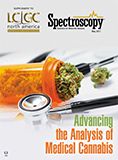
Separation of Ultra-Short and Long Chain PFAS Compounds Using a Positive Charge Surface Column
December 11th 2024A separation of ultra-short and long chain PFAS (C1-C18) is performed on a HALO®PCS Phenyl-Hexyl column along with a HALO®PFAS Delay column which demonstrates excellent retention for both hydrophilic and hydrophobic analytes.


